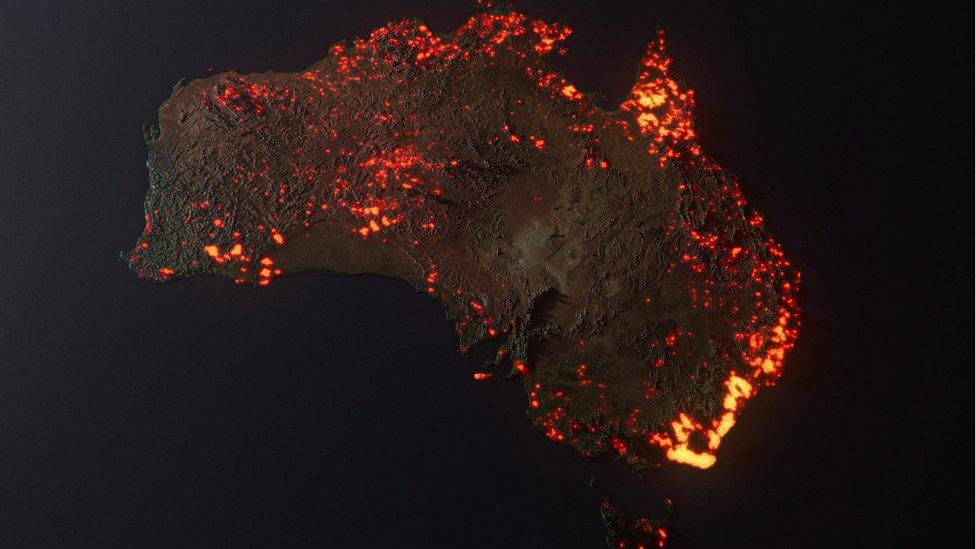Australia bushfire crews battle mega blaze near Snowy Mountains
- Published
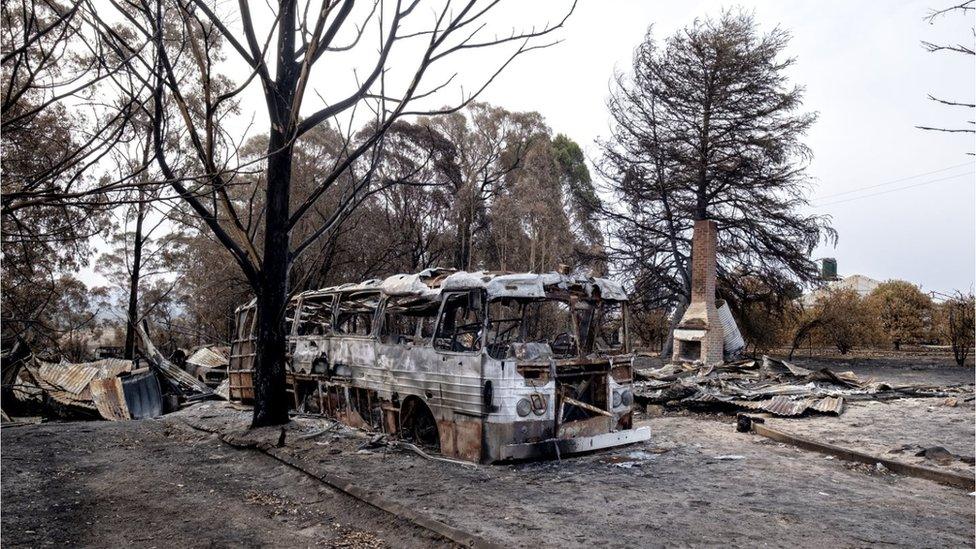
The fires have already devastated huge swathes of Victoria and NSW
Gale force winds have fanned two of Australia's massive bushfires into a feared "mega blaze", with authorities warning of worse weather to come.
It had been feared for days that fire would spill over the New South Wales-Victoria border in the Snowy Mountains.
Forecasts are for more heat, strong winds and dry lightning. In South Australia, firefighters also battled infernos on Kangaroo Island.
In parts of both states, residents were told to leave their homes.
Meanwhile, tens of thousands of people across Australia took part in climate change protests on Friday.
In cities including Sydney, Melbourne and Canberra, demonstrators turned out to press the government of Prime Minister Scott Morrison to make a quick transition away from fossil fuels.
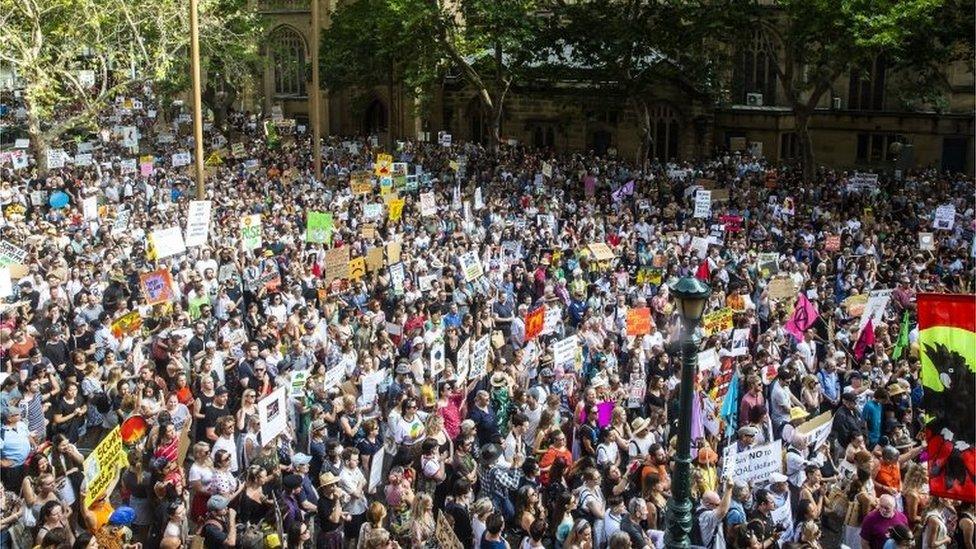
Australians took to the streets across the country to criticise government climate policy
Across many parts of the country deadly forest fires that have raged for weeks are threatening to advance again as temperatures soar. The winds mean fires could spread quickly and unpredictably this weekend.
The mega blaze south of the Snowy Mountains came after two fires at Dunns Road and East Ournie Creek joined up, following another massive fire merger nearby earlier in the week. An area totalling nearly 600,000 hectares (1.5m acres) - about four times the size of Greater London - is now ablaze.
New South Wales (NSW) Rural Fire Service spokesman Anthony Clark said a "finger" of the East Ournie Creek blaze had collided with the fire at Dunns Road on Friday evening.


Mr Clark said a number of small fires started by lightning strikes had merged and grown, the Sydney Morning Herald reports.
"It provides a challenge for firefighters as, when they merge, it increases the size and opens up more uncontained perimeter."
Fires in NSW have destroyed about 1,000 homes since the New Year and more than 150 bushfires are burning there.
But the danger is equally great further south in Victoria.
Victoria's Country Fire Authority issued several emergency warnings on Friday, telling people to evacuate before it became too dangerous.
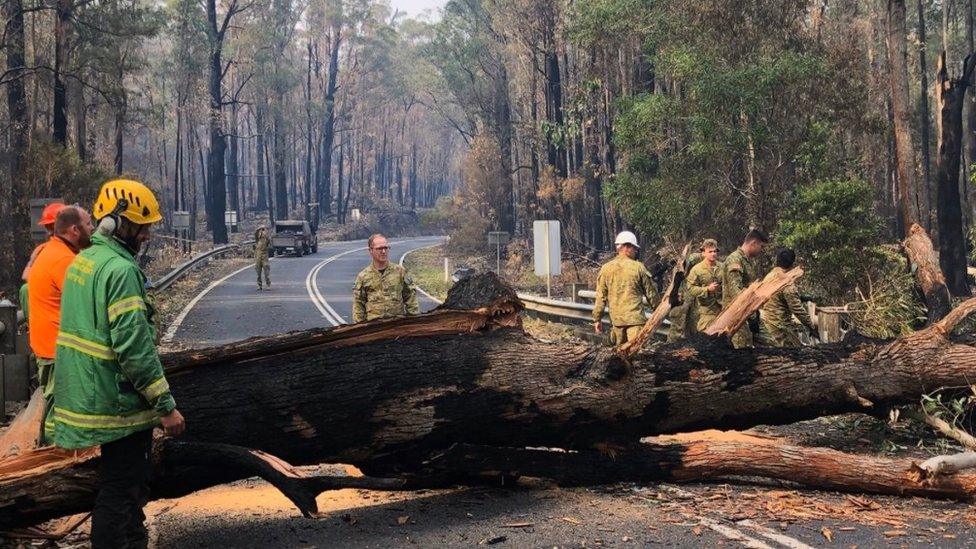
Firefighters clearing a road in Victoria
Making the task harder for fire crews, aircraft were unable to operate overnight in the dark.
What happened on Kangaroo Island?
The largest town on the island in South Australia was cut off by bushfires as the weather whipped up the most significant threat for almost a week.
Erratic winds amplified a blaze which isolated Kingscote from roads. Crews are battling strong winds, soaring temperatures and parched bushland.
Cooler air moves into bushfire areas, whilst parts of the north are seeing flooding rain.
More than 150,000 ha of forest have already been destroyed on the island, which is renowned for its unique ecology and wildlife.
Since September, at least 27 people have died in Australia's bushfires, which have destroyed more than 10.3m ha nationally.
Firefighters from the US, Canada and New Zealand are among those who have flown in to assist fatigued crews.
Allow X content?
This article contains content provided by X. We ask for your permission before anything is loaded, as they may be using cookies and other technologies. You may want to read X’s cookie policy, external and privacy policy, external before accepting. To view this content choose ‘accept and continue’.

The crisis has also taken a vast toll on wildlife. An estimated 25,000 koalas were killed when flames devastated Kangaroo Island last week.
Australia saw its hottest and driest year on record in 2019 due to two specific weather phenomena and climate change, the Bureau of Meteorology said on Thursday.
Authorities have warned that the huge fires, spurred by high temperatures, wind and a three-year-drought, will persist until there is substantial rainfall.
Orphaned Australian baby bats wrapped with love

- Published9 January 2020
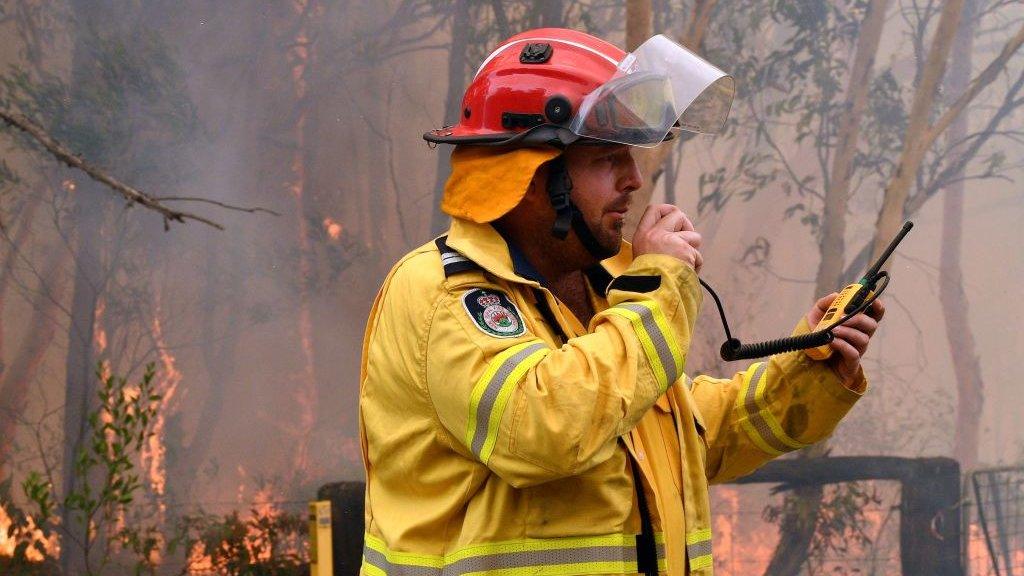
- Published7 January 2020
